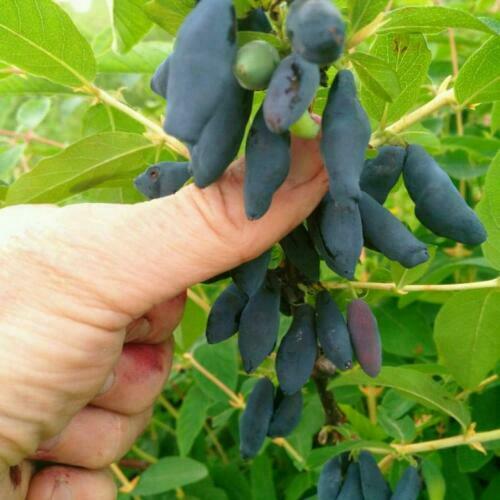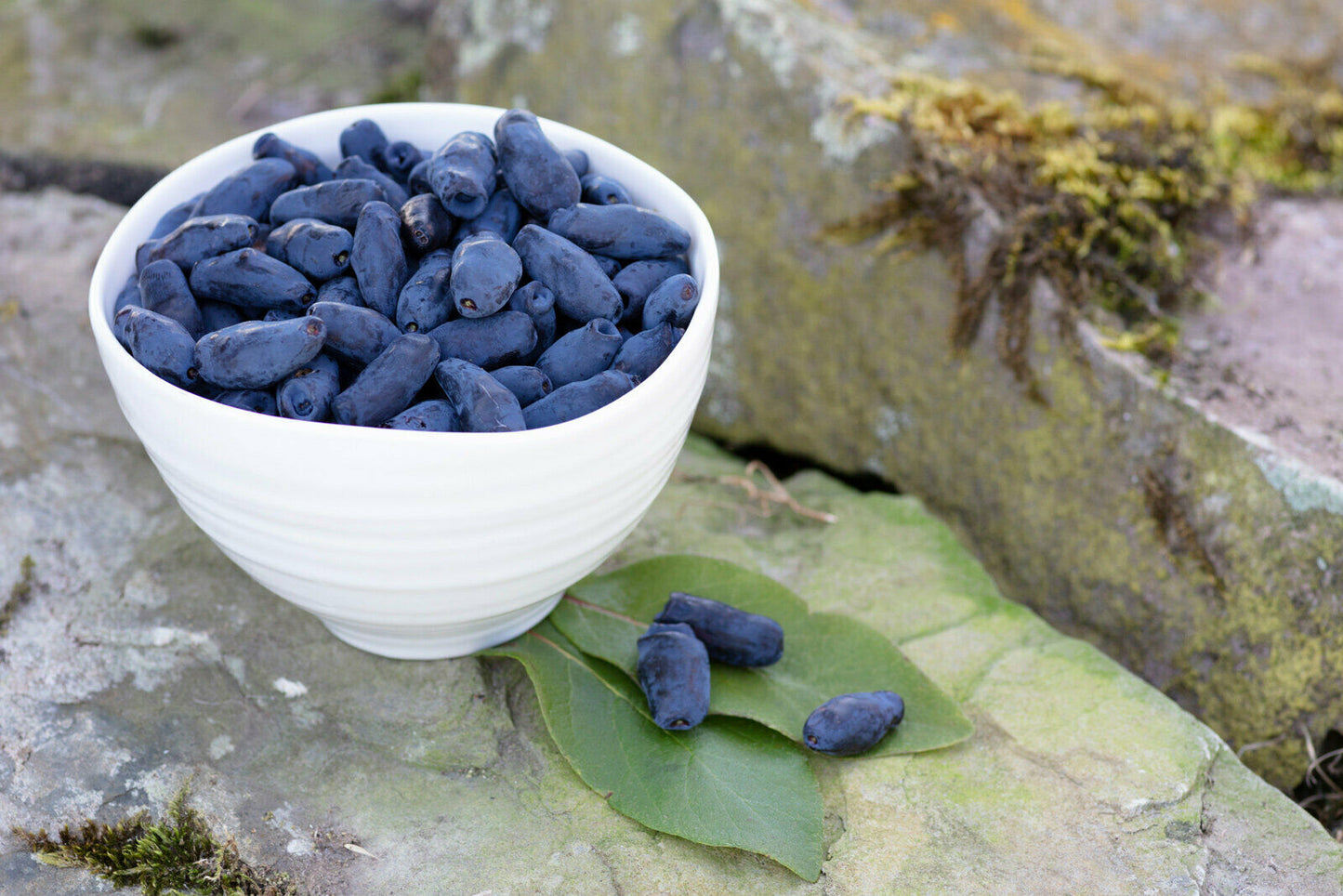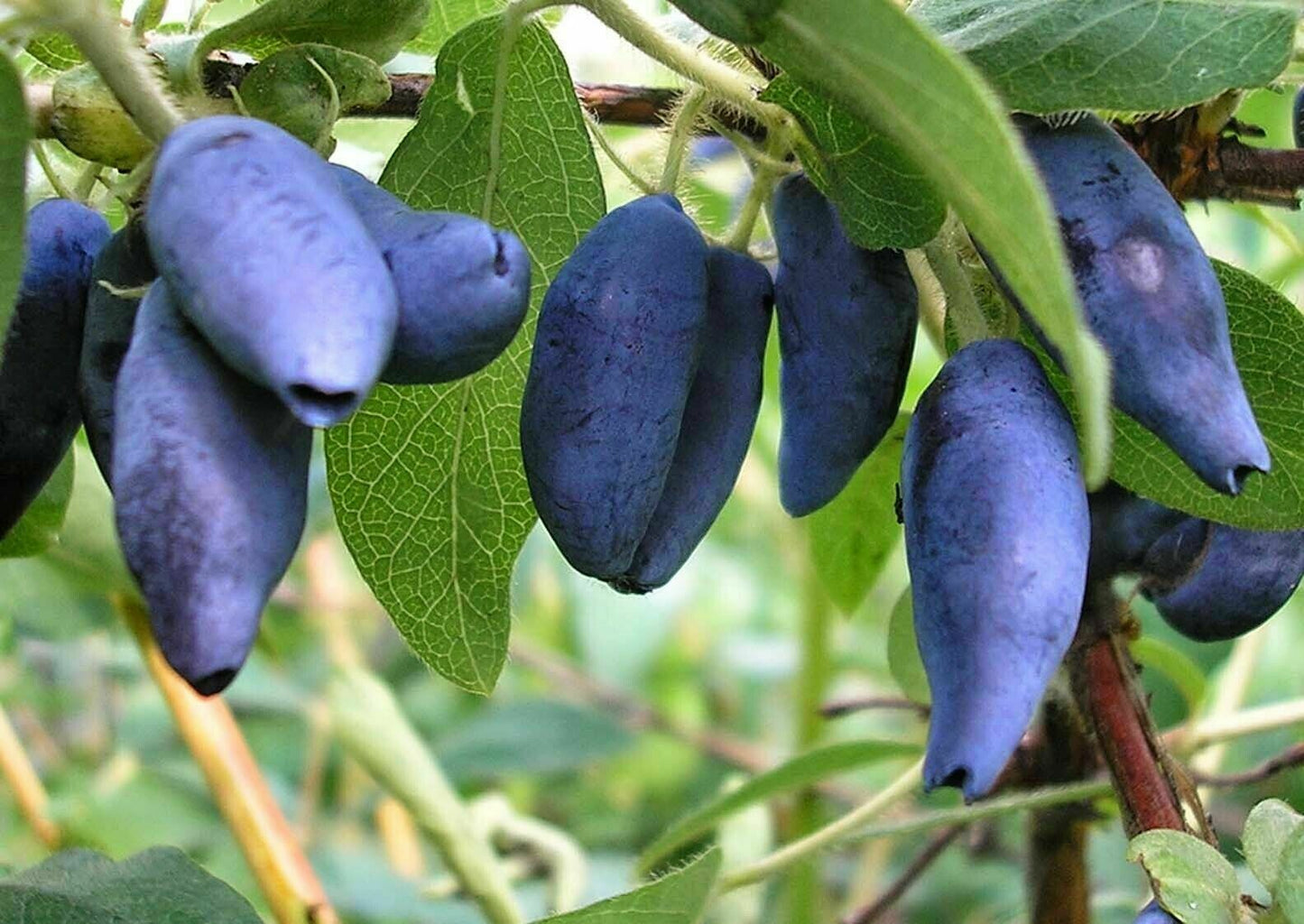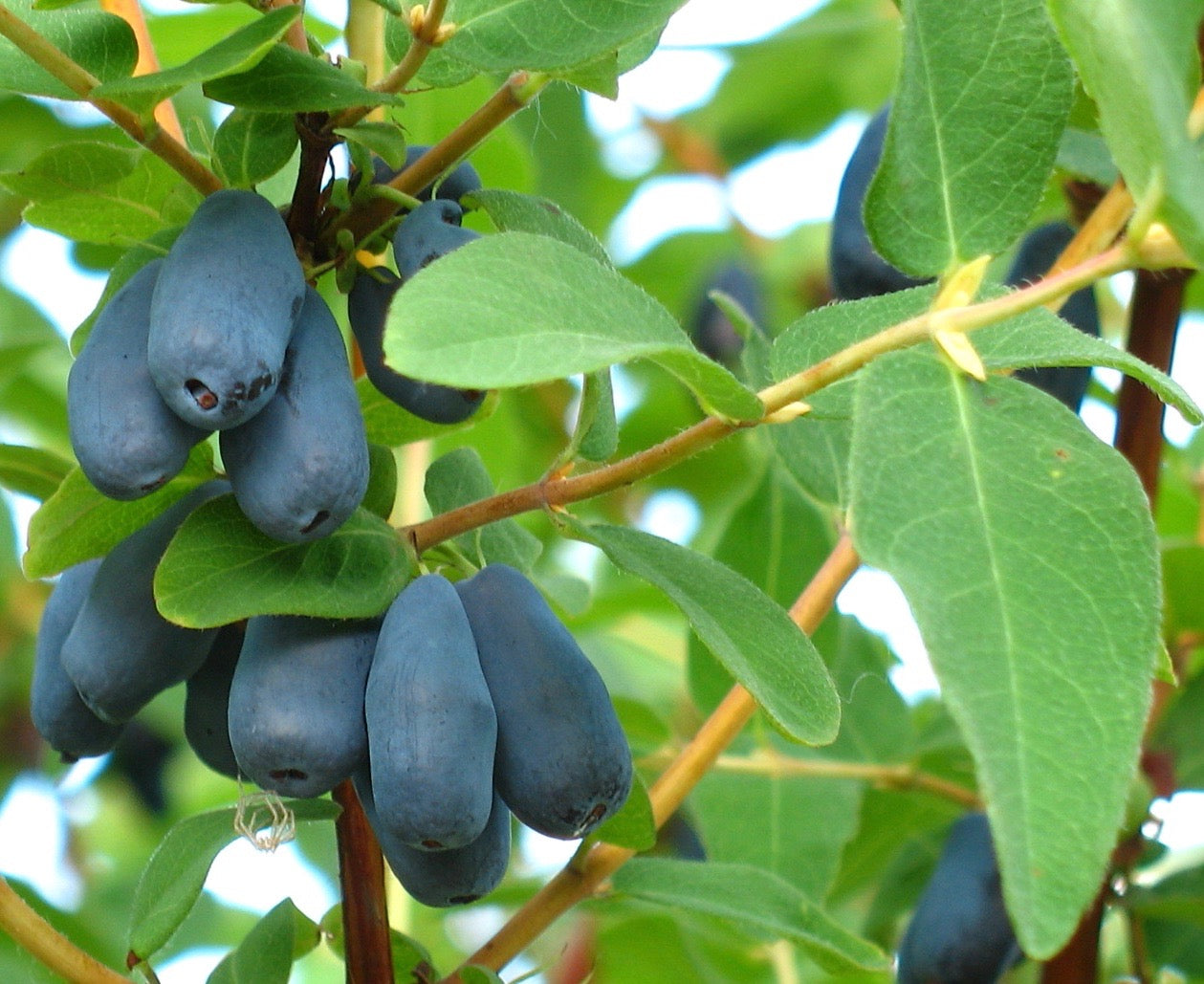speedy-seeds.co.uk
Honeyberry | Lonicera Caerulea 15+ Seeds | Haskap | Organic -Own Crop
Regular price
£5.99 GBP
Regular price
Sale price
£5.99 GBP
Unit price
per
Tax included.
Couldn't load pickup availability
Please find for sale 15+Honeyberry seeds (Lonicera Caerulea) also known as blue honeysuckle, sweetberry honeysuckle, fly honeysuckle, blue-berried honeysuckle and most commonly Haskap. Honeyberries are probably the earliest fruiting of all berry fruits - I get the first crop off my 2 year plants old plants May/June
Limited Stock - I probably wont be selling these next year for three reasons. Firstly, there are only a couple of seeds in each berry and they are a real pain to extract, secondly it stained my hands dark blue and most importantly, I used up lots of seeds that I could have eaten on my morning greek yogurt !
SAVE PACKAGING MATERIALS - SEE OTHER INTERESTING & UNUSUAL SEEDS & PLANTS IN MY SHOP
INSTRUCTIONS - TO SAVE PAPER I NO LONGER SEND OUT WRITTEN INSTRUCTIONS TO CUSTOMERS. INSTRUCTIONS ARE BELOW SO PLEASE BOOKMARK THIS PAGE.
Background
Honeyberries are fruit of forms of the honeysuckle Lonicera Caerulea, also known as blue honeysuckle or edible honeysuckle. The fruits are very similar to blueberries in taste and looks, and can be eaten raw or used in jams and jellies. Like blueberries they are high in antioxidants and vitamin C.
In fact, according to research in Japan, Honeyberries "beat" blueberries across the board in terms of their vitamin an mineral content:
It is hardly surprising therefore that UK supermarkets have already identified them as the "next big thing" and commercial production has already started in Scotland and elsewhere.
The best news is that Honeyberry are fully hardy to the UK climate (down to -40c !) and are relatively easy to grow.
Germination Guide
For optimal germination rates, Honeyberry seeds benefit from cold stratification. As a member of the honeysuckle family and hardy in cold locations, it is logical that stratification will help. Stratification is a process of simulating natural conditions that the seeds must experience before germination can occur (if a seed germinates in the middle of winter it will die). In the wild, seed dormancy is usually overcome by the seed spending time in the ground through a winter period and having its hard seed coat softened up by frost and weathering action. This cold, moist period triggers the seed's embryo; its growth and subsequent expansion eventually break through the softened seed coat in its search for sun and nutrients.
Honeyberry Seed Cold Stratification – simple steps:
- Soak seeks for 24 hours in a glass of cold water
- Drain off water
- Place seeds on a slightly damp piece of kitchen towel in a freezer bag or similar
- Loosely fasten & mark bag
- Place in bottom fridge for 40 days or cold shed/outbuilding
- Sow individually 3cm apart on a clean tray of moist compost
- Sieve a thin layer of compost over the top
- Cover with a plastic lid or cling film/plastic bag with a couple of small holes in
- Keep in a light place eg windows sill. Ideal temperature 15-20c. Keep out of strong sunlight. Keep moist
- Once the first seedlings appear, remove cover
- Pot on to individual pots once they have more than one set of leaves.
Tip! Divide the seeds into several sealed bags when cold stratifying just in case rot gets into one bag
Soil
When large enough to be planted out, they should go in well-drained soil with compost dug in. Soil pH range of 5.0 to 7.0 is preferred. Note that for optimal and reliable fruiting, unless you neighbours have these, you will need 2 or more mature plants (so they can pollinate each other).
Position
Honeyberries grow best in locations that receive half a day of sun, preferably in the morning. They grow well in partial shade along a woodland edge. Honeyberries can tolerate cold to -40C, so they are among the most cold-hardy small fruits you can grow.
Feeding
Fertilise in late autumn by spreading a 1-inch (2.5 cm) layer of composted manure over the root zones of the plants. Slow-growing plants can be fed again in early summer.
Materials
Materials
Shipping & Returns
Shipping & Returns
Dimensions
Dimensions
Care Instructions
Care Instructions




Image with text
Pair text with an image to focus on your chosen product, collection, or blog post. Add details on availability, style, or even provide a review.
-
Free Shipping
Pair text with an image to focus on your chosen product, collection, or blog post. Add details on availability, style, or even provide a review.
-
Hassle-Free Exchanges
Pair text with an image to focus on your chosen product, collection, or blog post. Add details on availability, style, or even provide a review.




